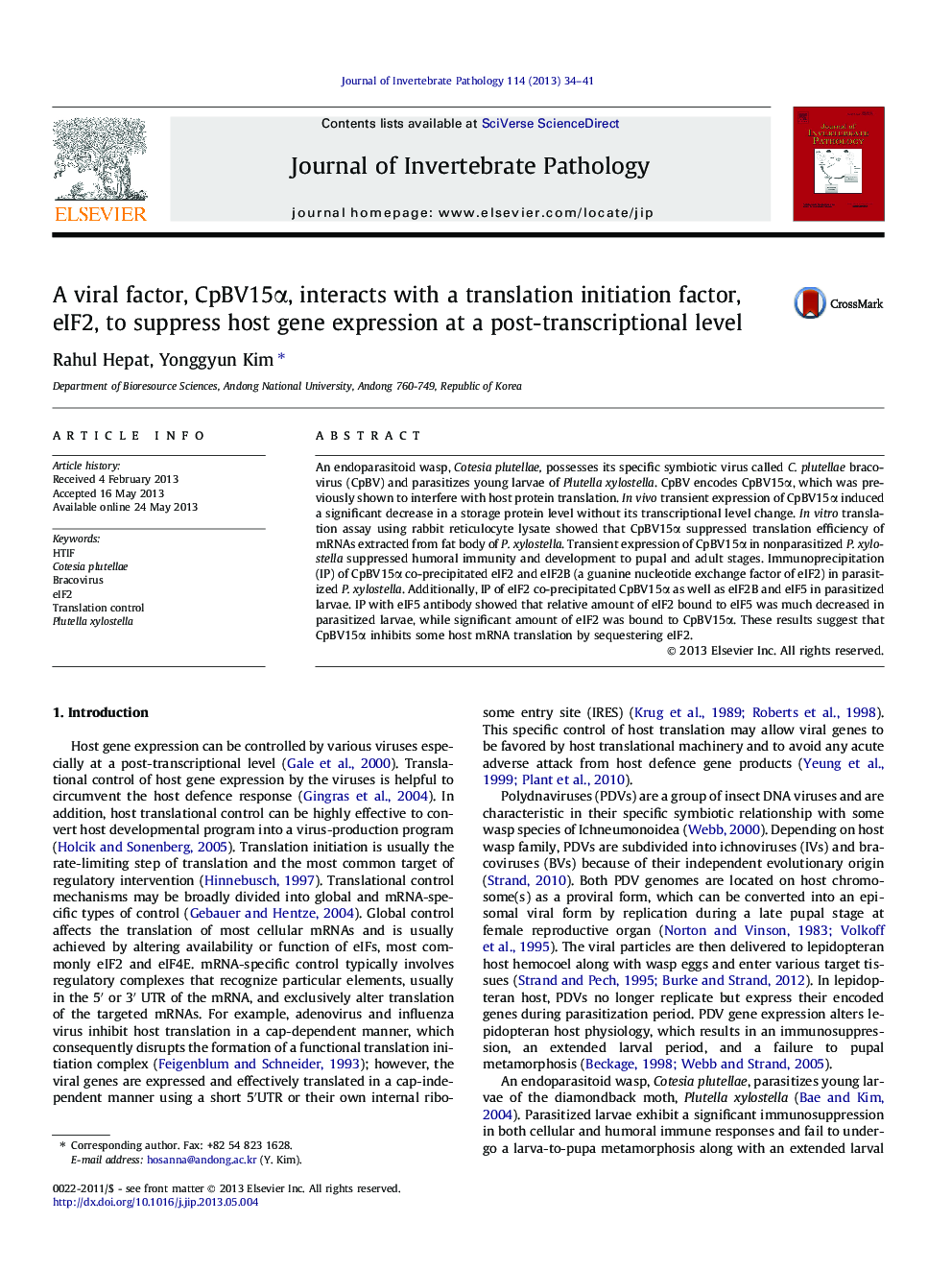| Article ID | Journal | Published Year | Pages | File Type |
|---|---|---|---|---|
| 6389584 | Journal of Invertebrate Pathology | 2013 | 8 Pages |
â¢CpBV is a polydnavirus and encodes host translation-inhbitory factor (HTIF).â¢CpBV15α is a HTIF and possesses a binding domain to eIF2.â¢eIF5 is crucial for constructing a 80S translation initiation complex by interaction with eIF2 and eIF2B.â¢CpBV15α sequestered eIF2 and eIF2B to prevent the function of eIF5.
An endoparasitoid wasp, Cotesia plutellae, possesses its specific symbiotic virus called C. plutellae bracovirus (CpBV) and parasitizes young larvae of Plutella xylostella. CpBV encodes CpBV15α, which was previously shown to interfere with host protein translation. In vivo transient expression of CpBV15α induced a significant decrease in a storage protein level without its transcriptional level change. In vitro translation assay using rabbit reticulocyte lysate showed that CpBV15α suppressed translation efficiency of mRNAs extracted from fat body of P. xylostella. Transient expression of CpBV15α in nonparasitized P. xylostella suppressed humoral immunity and development to pupal and adult stages. Immunoprecipitation (IP) of CpBV15α co-precipitated eIF2 and eIF2B (a guanine nucleotide exchange factor of eIF2) in parasitized P. xylostella. Additionally, IP of eIF2 co-precipitated CpBV15α as well as eIF2B and eIF5 in parasitized larvae. IP with eIF5 antibody showed that relative amount of eIF2 bound to eIF5 was much decreased in parasitized larvae, while significant amount of eIF2 was bound to CpBV15α. These results suggest that CpBV15α inhibits some host mRNA translation by sequestering eIF2.
Graphical abstractDownload full-size image
